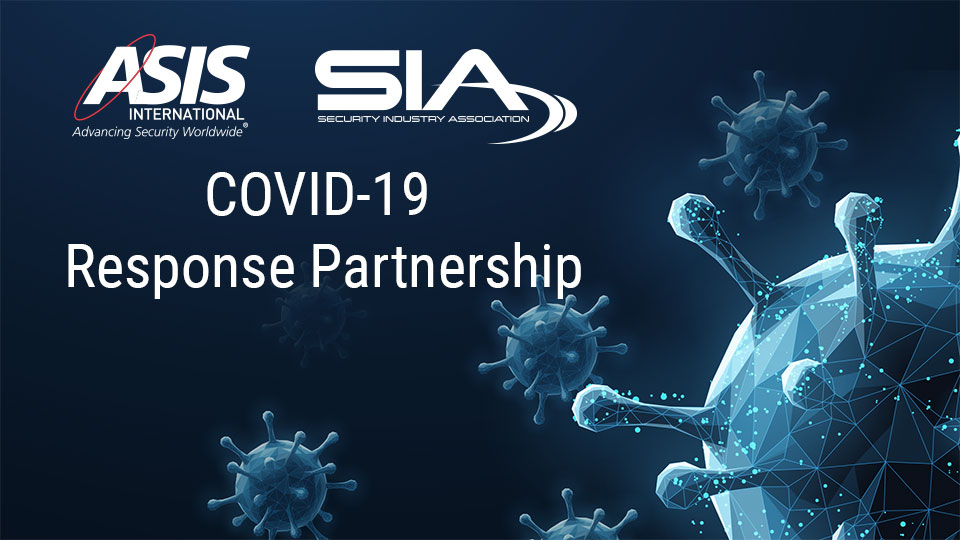Summary of New COVID-19 Stimulus Law “Phase 3”


On March 27, President Trump enacted H.R. 748, known as “Phase 3,” a $2 trillion stimulus package which provides additional aid to the American workforce impacted by COVID-19. The following is a summary of key provisions that will impact the business operations of SIA and ASIS International members in the United States, including loan forgiveness options to small business owners, updates to the tax code, increased mission support and grant assistance to law enforcement and first responders and other relevant provisions. [See SIA’s summary of Phase 2 here.]
Small Business Owners Should Know:
- The package increases the government guarantee of loans made for the Payment Protection Program through Dec. 31. Phase 3 provides $350 billion in U.S. Small Business Administration (SBA) 7(a) loans to small businesses under 500 employees and nonprofits for the purpose of maintaining existing workforce; a portion of which the SBA will forgive based on allowable expenses for the borrower. The maximum amount is $10 million per eligible applicant.
- Phase 3 also includes $17 billion for the SBA to cover six months of payments for small businesses with existing SBA loans.
- For eligible small businesses and independent contractors seeking Economic Injury Disaster Loans (EIDLs), $10 billion is appropriated for EIDL. For any EIDL loans made in response to COVID-19, the SBA shall waive any personal guarantee on advances and loans below $200,000. Certain applicants may be eligible for up to $10,000 in advanced loans.
Once the SBA and the U.S. Department of the Treasury promulgate regulations on eligibility requirements and access to loan guarantees, SIA and ASIS will provide additional analysis.
Tax Fix for Commercial Property Improvements:
- This section enables businesses to write off immediately costs associated with interior improvements to a facility instead of having to depreciate those improvements over the 39-year life of a building. The provision, which corrects an error in the Tax Cuts and Jobs Act, not only increases companies’ access to cash flow by allowing them to amend a prior year return, but also incentivizes them to continue to invest in improvements as the country recovers from the COVID-19 emergency.
- Installation and upgrades to security and life-safety systems qualify. This available “bonus depreciation” for Qualified Improvement Property QIP is 100 percent of costs for each tax year through 2022, which then phases out by 2027. Beyond the Section 179 expensing for these costs made available to small and medium sized businesses through the Tax Cuts and Jobs Act, this change means these improvements can now be written off regardless of business size.
Security Practitioners and Industry Should Know: Increases to Federal Grant and Mission Support Programs
Law Enforcement – U.S. Department of Justice (DOJ)
- Directs funds for critical COVID-19 response missions, domestic and abroad; personal protective equipment and necessary supplies; clean work environments; and enhanced telework capabilities. Specific amounts include:
- $20 million to the Federal Bureau of Investigation
- $15 million to the Drug Enforcement Administration
- $15 million to the U.S. Marshals Service
- $100 million to the Bureau of Prisons, including funds for Correctional Officer overtime and inmate medical care and supplies related to coronavirus.
- Includes $850 million for the Byrne-Justice Assistance Grant Program, which allows state and local police departments to meet local needs, including purchase of personal protective equipment and other medical items and to support overtime for officers on the front lines.
U.S. Department of Homeland Security (DHS)
- Provides $45.9 billion for DHS, including $178 million department-wide for necessary personal protection equipment for personnel including gloves, garments, goggles, hand sanitizer, respirators and surgical masks for six months.
- Directs $141 million for Coast Guard Reserve deployments to support medical response and port security requirements and necessary IT enhancements required immediately to aid response efforts.
- Directs $9.1 million to the Cybersecurity and Infrastructure Security Agency to address immediate needs for the protection of critical infrastructure nationwide.
- Directs $45.4 billion to the Federal Emergency Management Administration (FEMA), including $45 billion to continue FEMA’s entire suite of response and recovery activities and reimbursements provided to states and localities nationwide by the Disaster Relief Fund for emergency and major disaster declarations, as well as funding for FEMA facilities and IT required to support FEMA’s lead role in coordinating federal response activities.
- Includes $400 million for grants that can be disbursed in a timely manner for firefighters, emergency managers and providers of emergency food and shelter.
Additional provisions impacting SIA and ASIS members include:
- U.S. Department of Commerce Manufacturing Extension Partnership (MEP) – An additional $50 million will be distributed among the 51 MEP centers to help small and medium-sized manufacturers recover from the economic impacts of COVID-19.
- Temporarily extends authorization for the Chemical Facility Anti-Terrorism Standards security program through July 23, 2020. Authorization was otherwise set to expire on April 18.
What’s Next for Congress and the Administration?
Congress and the Trump administration have now passed three COVID-19 aid packages – Phase 1 allowed $1 billion in loan subsidies to be made available to help small businesses and nonprofit organizations which have been impacted by financial losses, and Phase 2 contained a refundable payroll tax credit to reimburse local businesses for paid sick leave and family and medical leave wages paid to employees that are affected by COVID-19.
The Trump administration is expected to unveil another large stimulus package, known as “Phase 4,” which could be focused on infrastructure improvements. SIA and ASIS will provide further details once the stimulus package has been released.
